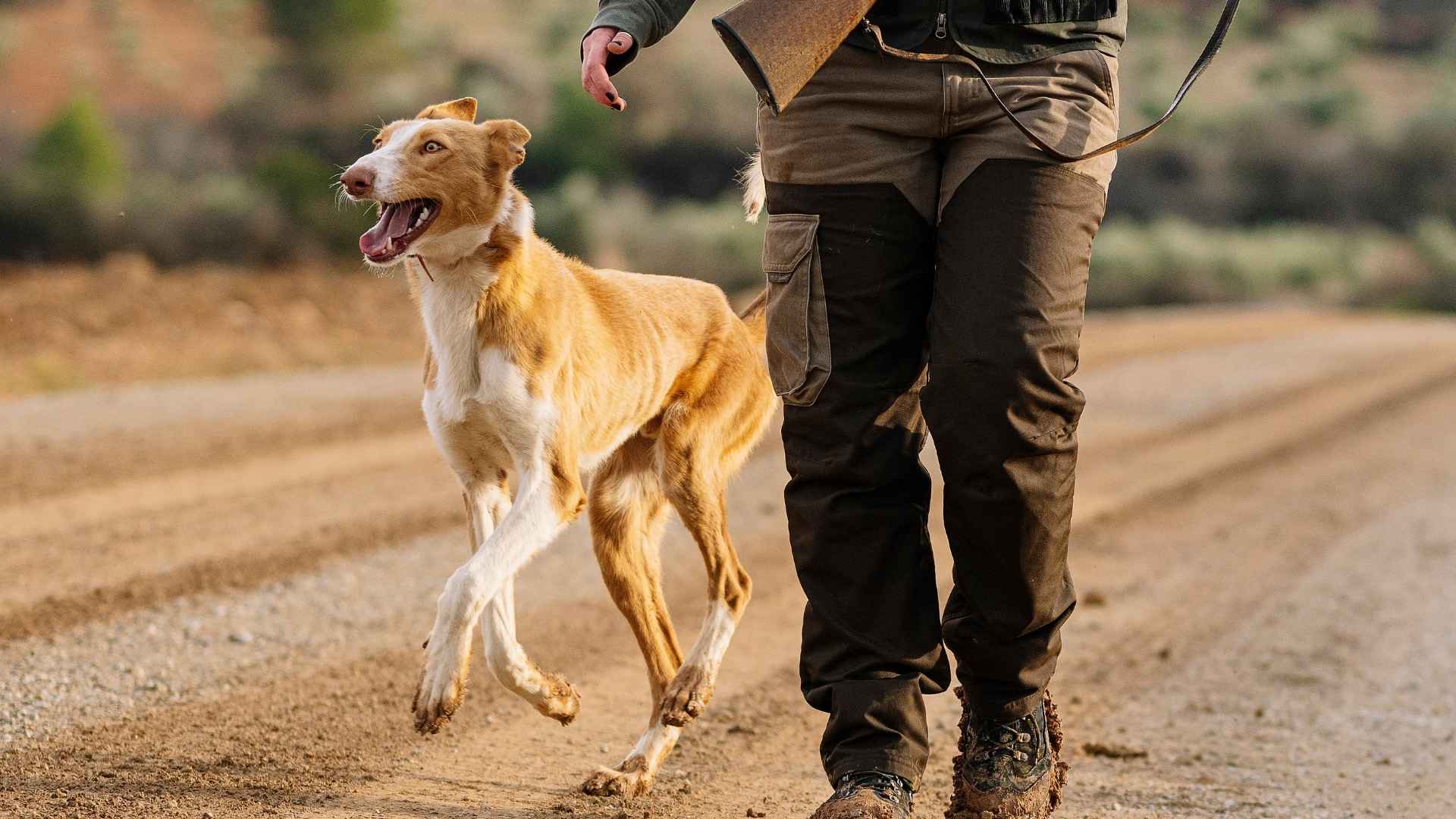Have you ever watched your dog stop mid-walk, nose in the wind, body suddenly alert? What are they sensing? Where does that come from? Long before leashes and lawns, dogs were trackers, pointers, and partners in the hunt.
That instinct doesn’t vanish with time. Some breeds carry it stronger than others—baked into their muscles, wired into their brains. And when it shows up, it’s not confusing. It’s memory. Hunting isn’t something these dogs learned. It’s something they were born knowing.
As we move forward, you’ll discover breeds that haven’t forgotten what they were made for. Whether bred to follow scent, sight, or sound, these dogs were once essential to survival. And even now, in a fenced yard or city park, those roots still run deep.
Dog Breeds with Ancestral Hunting Roots
1. Labrador Retriever
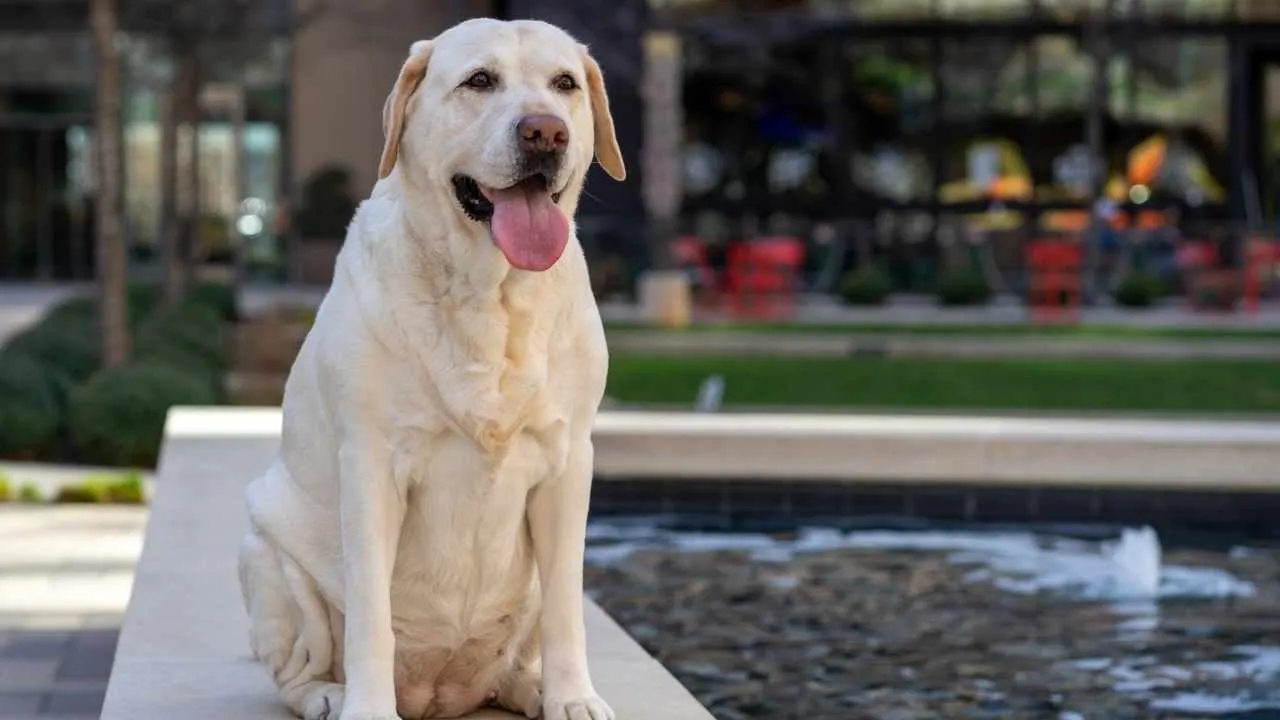
The Labrador’s early ancestors worked alongside Newfoundland fishermen, retrieving nets and escaping debris in icy waters. Their thick, otter-like tail and webbed feet weren’t accidental — they were practical features. These dogs were shaped for endurance, traction, and cold-weather performance.
Nose-Driven Field Workers
Once brought to England, they were refined further as game retrievers for upland hunts, as the AKC stated. Their high scent sensitivity and eagerness to retrieve made them ideal for tracking fallen birds. Their instinct to carry gently — the “soft mouth” — was developed through careful breeding.
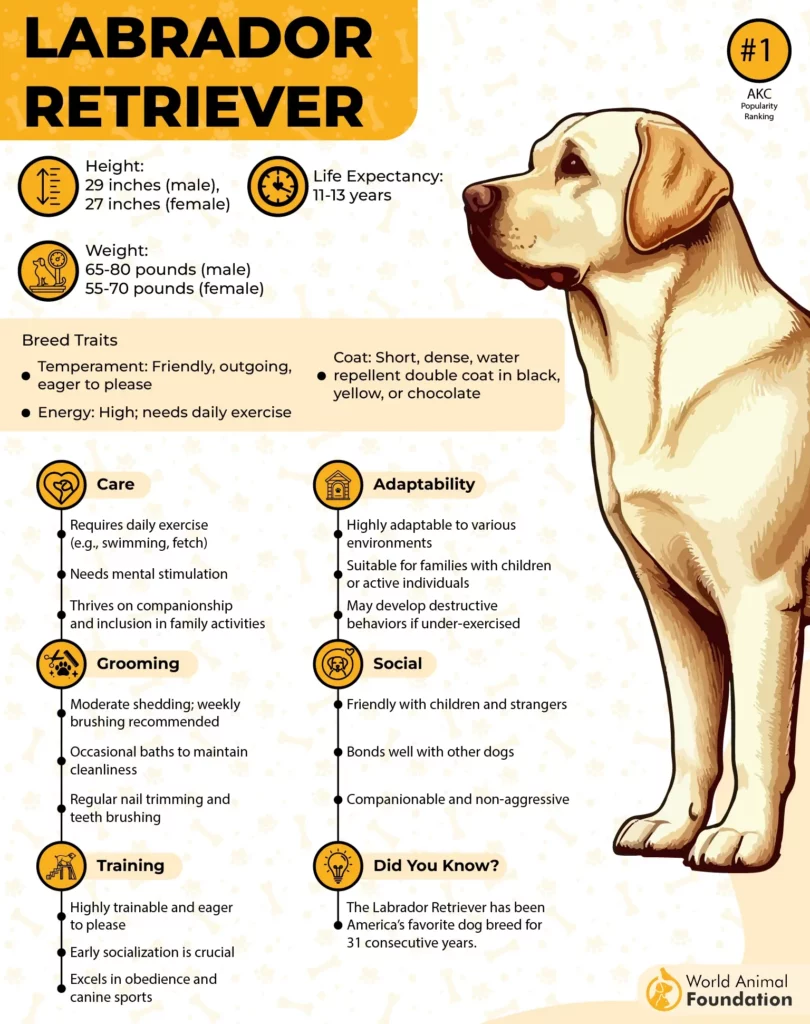
Endurance and Trainability Combined
Their athletic structure, deep chest, and muscular thighs allow them to remain active for long durations. Combined with natural responsiveness to commands, they easily adapted to different hunting terrains. It’s one reason they’ve remained a preferred field partner for generations.
A Fun Fact Rooted in History
Labradors are among the few hunting dogs originally used both in waterfowl retrieval and land-based bird flushing — a dual specialization that sets them apart. This blend of utility and temperament still appeals to the modern dog owner who values active companionship.
2. German Shorthaired Pointer
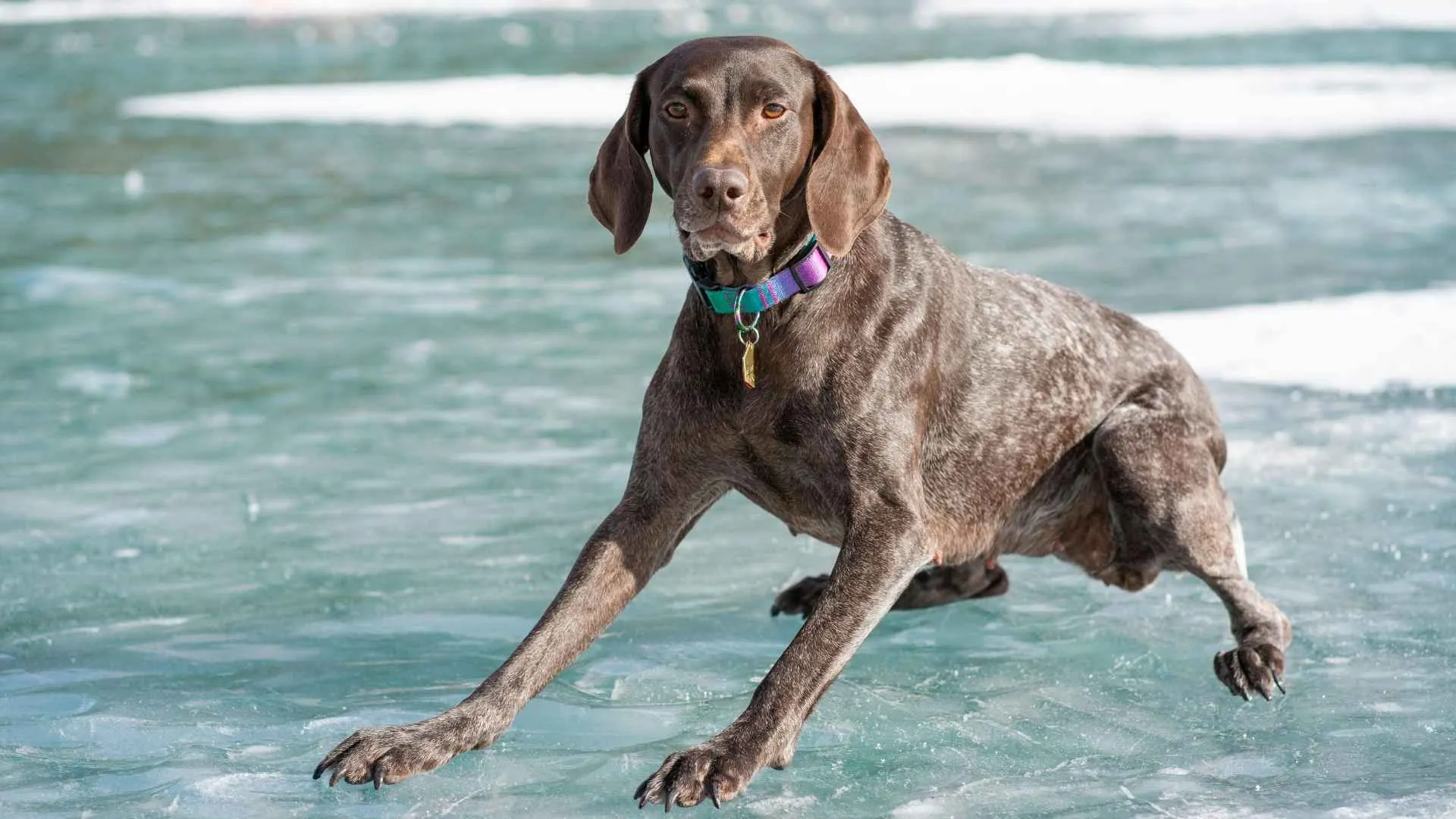
German Shorthaired Pointer has a deep chest, tight abdomen, and long limbs — features that support stamina during long tracking sessions. Their smooth coat keeps them agile through dense fields without causing overheating. Muscle balance across their frame ensures efficient movement across uneven ground.
Instinct-Driven Tracking Skills
As a natural pointing dog, it instinctively halts and freezes mid-motion when scenting prey, signaling hunters with its whole posture. This response develops early and strengthens with use, showing how deeply embedded the behavior is in their bloodline.
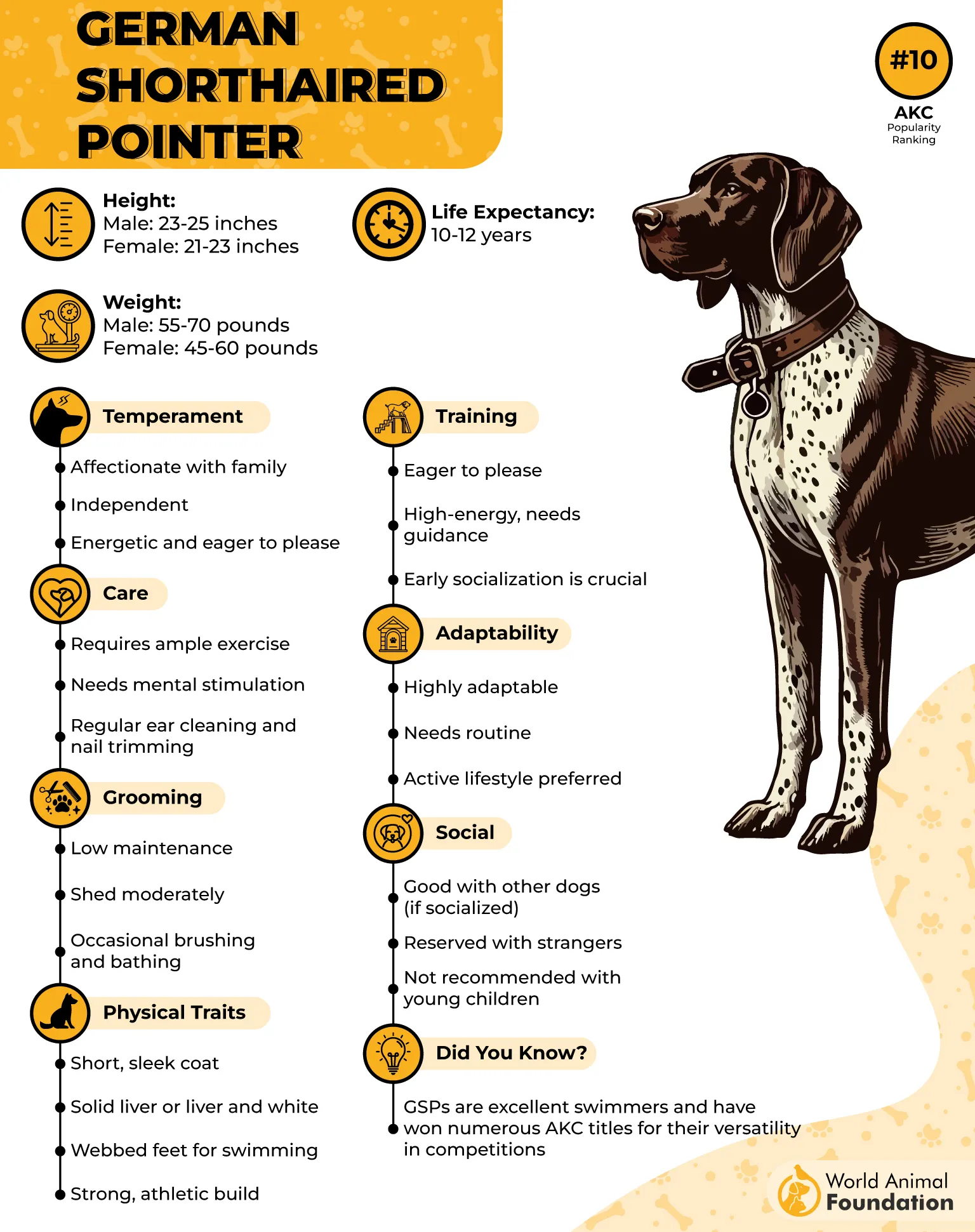
High Drive and Responsiveness
This pointer excels when given mental tasks that mirror real-world sensing or flushing work. Its alertness helps distinguish subtle shifts in its surroundings, especially with birds or small game. Their willingness to listen makes them highly adaptable in the field.
Shared Space with Awareness
Even in multi-pet homes, this breed often manages well around other animals when introduced early. Their prey drive doesn’t override their ability to be socialized and directed. Among the most reliable hunting breeds, this control is part of what defines them.
3. Chesapeake Bay Retriever
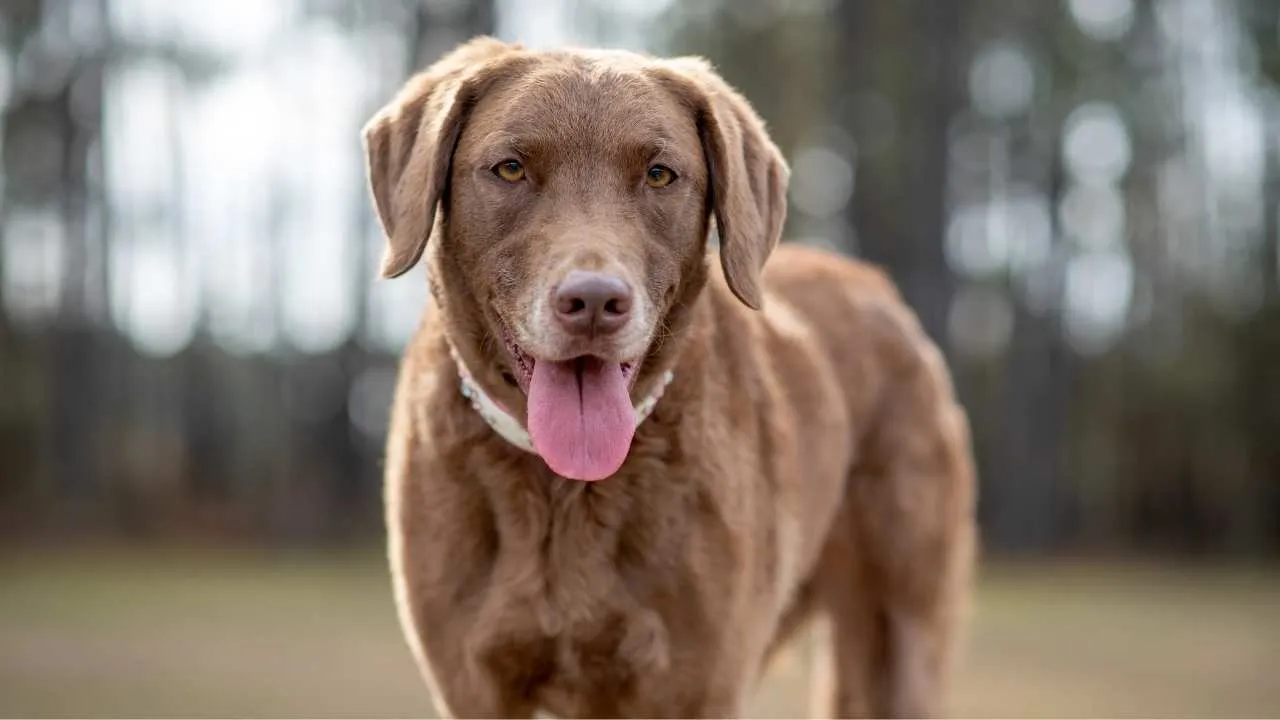
This breed has a dense, oily double coat that insulates against freezing water and harsh wind. Its powerful shoulders and deep chest allow it to push through icy currents with little resistance. Strong webbed feet also enhance movement through wetlands and marshes.
Natural Determination and Grit
Unlike many dogs that may hesitate in difficult terrain, the Chesapeake’s bold and persistent personality allows it to push through. They are independent thinkers and don’t rely heavily on repeated commands. These traits make them reliable in solo fieldwork.
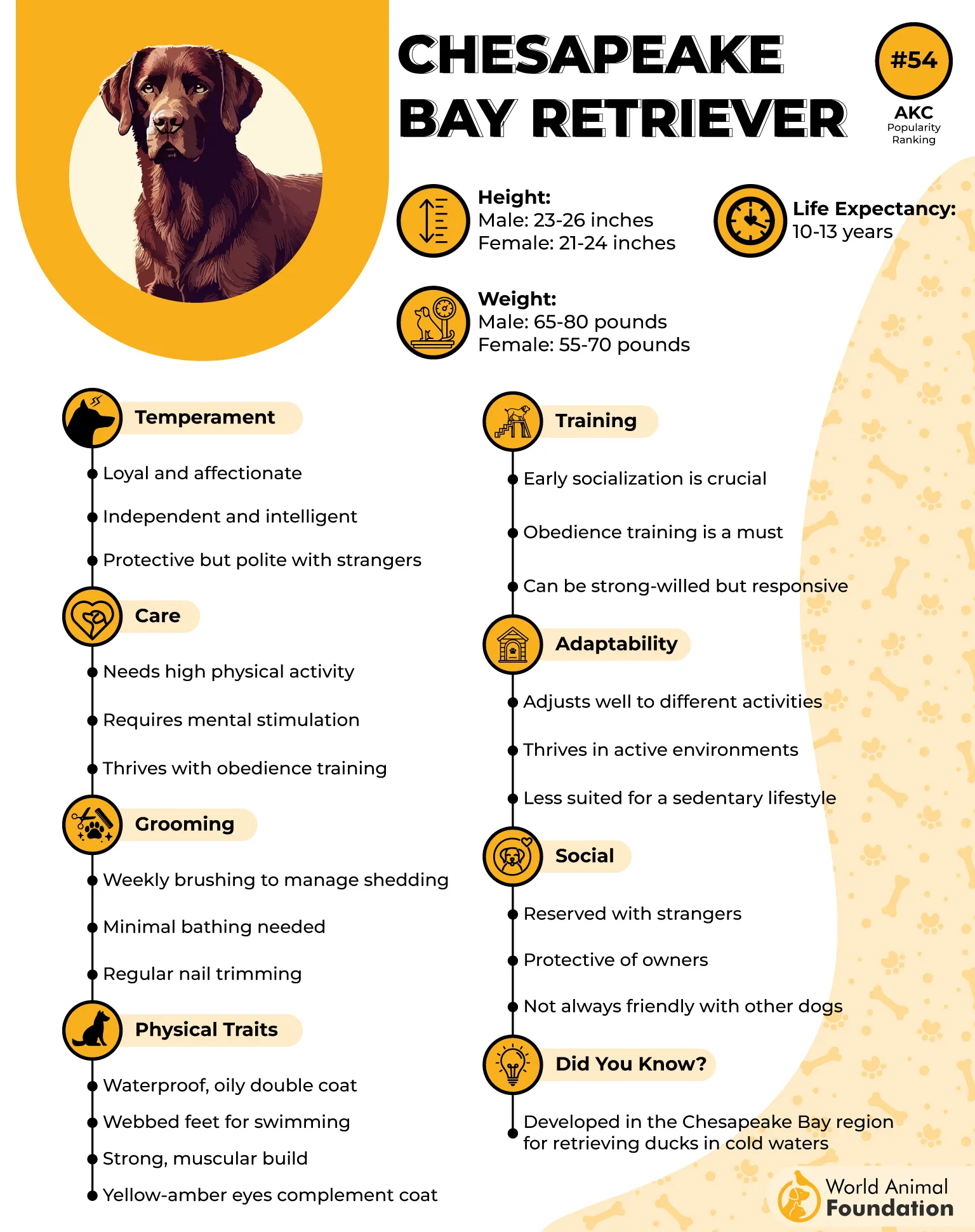
Loyal Yet Task-Oriented
While generally reserved around strangers, they form deep bonds with their handlers. With proper training, their loyalty sharpens into disciplined responsiveness, especially during demanding retrieval tasks. They prefer focus-driven roles over social or indoor stimulation.
Unique Scent Memory Capability
This breed is known for being able to remember and locate multiple birds from a single series of falls. In demanding hunting activities, this trait allows them to mark fallen game with remarkable precision — something rarely matched by other retriever breeds.
4. Bloodhound
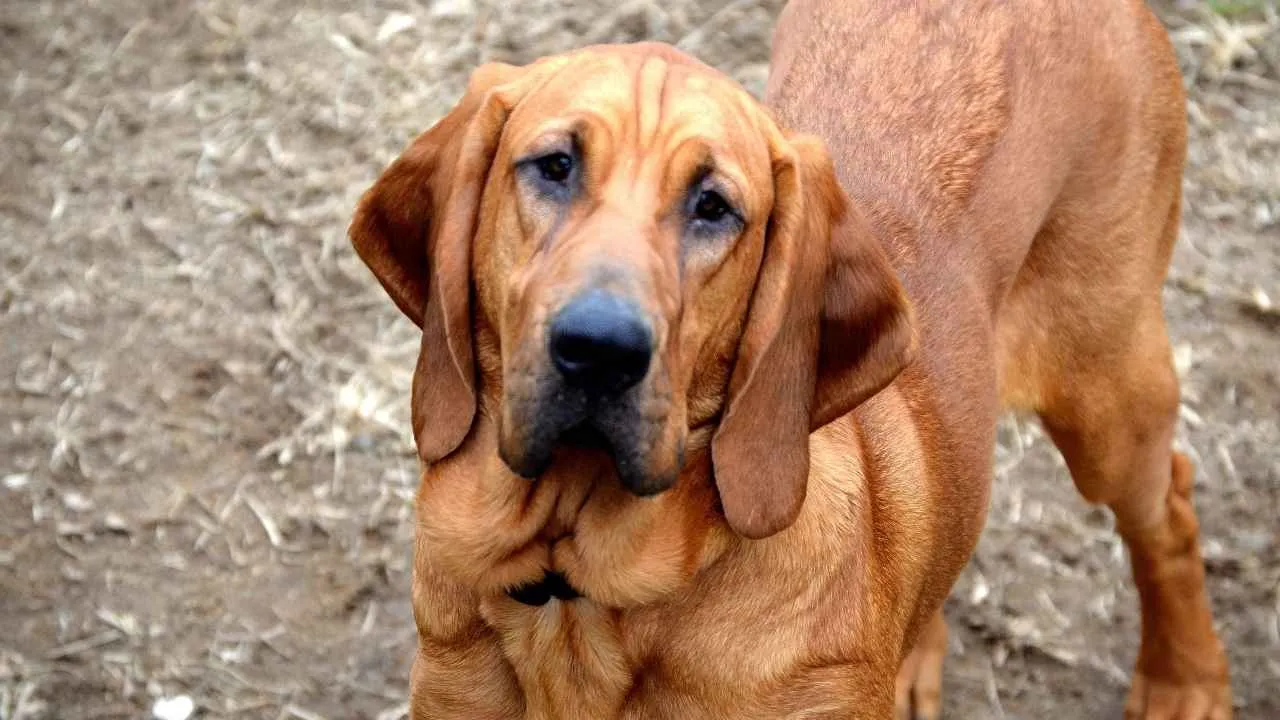
The Bloodhound’s ability to follow scent trails for over 100 miles is unmatched among certain breeds. Their long ears and deeply wrinkled skin help trap and concentrate scent particles near their nose. Their perseverance on trails remains a working standard in search operations.
Highly Developed Olfactory System
With over 300 million scent receptors, Bloodhounds possess an exceptional sense of smell that remains a scientific benchmark. They can differentiate individual scents even after several days. Their droopy facial structure naturally supports prolonged tracking without visual reliance.
Sturdy Frame Built for Endurance
Although they fall under larger dogs, their muscular build is surprisingly agile for long-distance scent work. Their deep chest supports stamina, while strong hindquarters aid in uphill or uneven terrains. They were bred to move with steady purpose, not rapid bursts.
Recognized by Court Testimony
One of the few breeds whose scent-trailing ability has been accepted as evidence in U.S. court cases. This distinction highlights the reliability and consistency of their tracking behavior, making them invaluable in both historical and modern law enforcement roles.
5. Boykin Spaniel
The Boykin Spaniel has a compact frame and sturdy legs that make it especially agile in wooded and swampy areas. Its medium-length coat offers protection without weighing the dog down during retrieval. These physical characteristics support long hours of focused fieldwork.
Responsive Temperament in Action
They’re highly responsive to commands and known for maintaining close range while flushing. Their steady movement and ease of training make them reliable in unfamiliar terrain. Handlers often praise their composed energy and fast learning curve.
Adaptability Across Terrains
Boykins are remarkably adaptable to changes in environment, from dense forests to water-heavy fields. Their balance and body coordination allow quick transitions between dry and wet ground. This helps maintain their performance without lag or physical strain.
Endurance Meets Efficiency
The breed’s stamina allows them to work extended sessions with minimal recovery time. Their muscular structure and lung capacity support efficient motion through thick vegetation. Many still consider them one of the most underrated upland hunting companions today.
6. Beagle
The Beagle’s short legs and level backline keep its nose close to the ground during long tracking sessions. Its movement is balanced and steady, suited for trailing scents across fields and dense brush. Their physical layout supports endurance without overexertion.
High-Precision Scent Detection
With 225 million scent receptors, Beagles rank among the most scent-sensitive breeds. They can follow specific scent trails even in overlapping or distracted environments. Their strong olfactory wiring is instinctive and has remained consistent for generations.
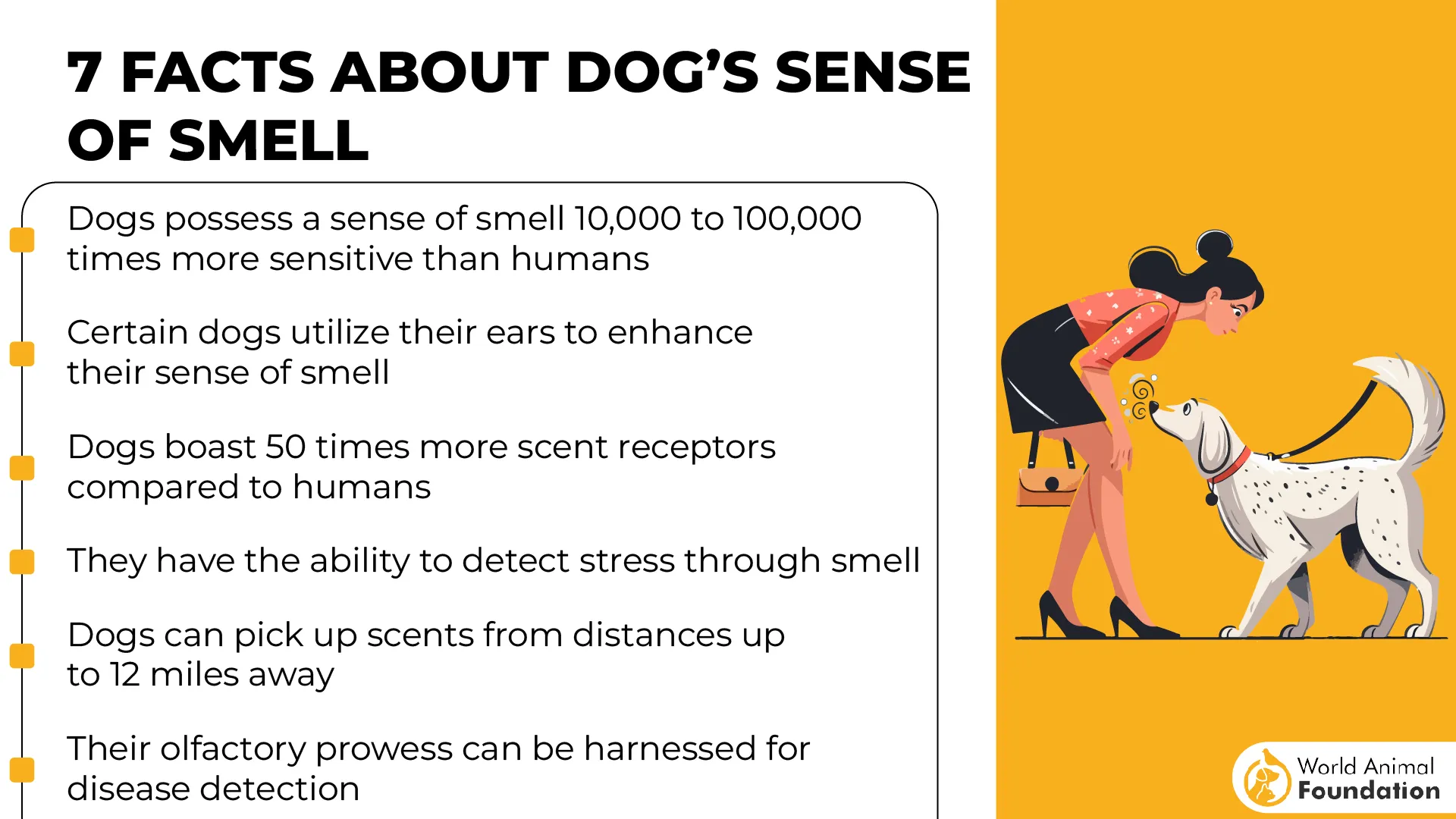
Vocal Signaling on the Move
Beagles are bred to use their voice as part of the trail. Their baying helps handlers follow them even when they’re not in sight. The breed’s tone and rhythm vary based on pace and distance, helping communicate trail status in real time.
Used in Practical Scent-Based Work
Beagles are among the only dog breeds selected by U.S. agencies for scent detection roles in controlled environments like airports. Their work in these spaces reflects the practical use of their natural traits, especially when identifying organic materials or food items.
7. Golden Retriever
Golden Retrievers were selectively bred for their ability to retrieve game birds without damage. Their jaw pressure is impressively low, allowing them to carry eggs without cracking them. This precise grip, known as “soft mouth,” is still a recognized trait in field lines.
Responsive to Direction in the Field
They excel at following hand signals and whistle cues during blind retrieves. This trait makes them particularly efficient when birds land out of sight. Their eagerness to work with a handler sets them apart in structured hunting environments.
Endurance Matched with Drive
Their stamina allows them to navigate uneven terrain and wetlands for extended periods. A deep chest and balanced muscle distribution give them sustained power during retrieves. They are rarely hesitant in cold or rough conditions due to their steady energy levels.
Instinctively Drawn to Water
According to Petplan, Golden Retrievers have a naturally water-repellent double coat, which helps them work in chilly lakes or rivers. Combined with their strong swimming technique, they remain effective waterfowl retrievers. Their tail acts like a rudder, aiding stability and turning underwater.
Conclusion
Long before parks and porches, dogs earned their place beside us through instinct and ability. When humans began hunting in organized groups, these companions tracked small animals, retrieved birds, and guarded camps with quiet skill.
Many of today’s domestic dogs still echo those ancient roles, especially those shaped for waterfowl hunting or bred as scent hounds. What you see in a focused stare or a purposeful trot isn’t learned—it’s legacy.
Whether it’s a puppy chasing scent trails or a retriever diving into cold lakes, that heritage remains strong. These breeds may sleep in warm beds now, but they haven’t forgotten the fields, forests, and waters that shaped them.


